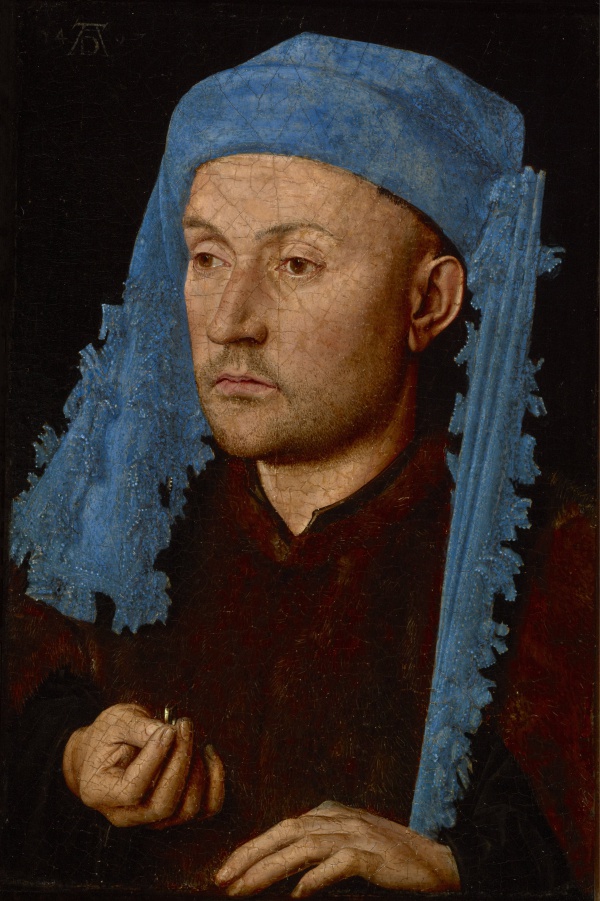Facts About Portrait of a Man with a Blue Chaperon
"Portrait of a Man with a Blue Chaperon" is a small yet captivating oil painting on panel, attributed to the Early Netherlandish master Jan van Eyck. Created around 1430, this piece showcases many of van Eyck's signature elements, such as meticulous attention to detail, a dark background, and ingenious illusionistic techniques.
Initially, some speculated that the man in the portrait might be a jeweler because he is holding a ring. However, it is now believed to be a betrothal portrait, likely depicting a nobleman. The subject is adorned in a chaperon headdress and a fur-lined jacket, highlighting van Eyck's extraordinary skill in rendering textures and facial features, including the stubble on the man's face. One of the most striking aspects of the painting is how the ring and the man's hand appear to protrude from the panel, creating a compelling three-dimensional effect.
For a significant period, art historians debated whether van Eyck indeed painted this piece. However, in 1991, a restoration combined with infrared photography analysis confirmed it as his work. The painting has a fascinating history; it was part of Samuel von Brukenthal's collection in the 18th century before moving into a public collection in Romania. Following some political changes, it ended up at the National Museum of Art of Romania but ultimately returned to the Brukenthal Museum in 2006.

 Bulgaria
Bulgaria